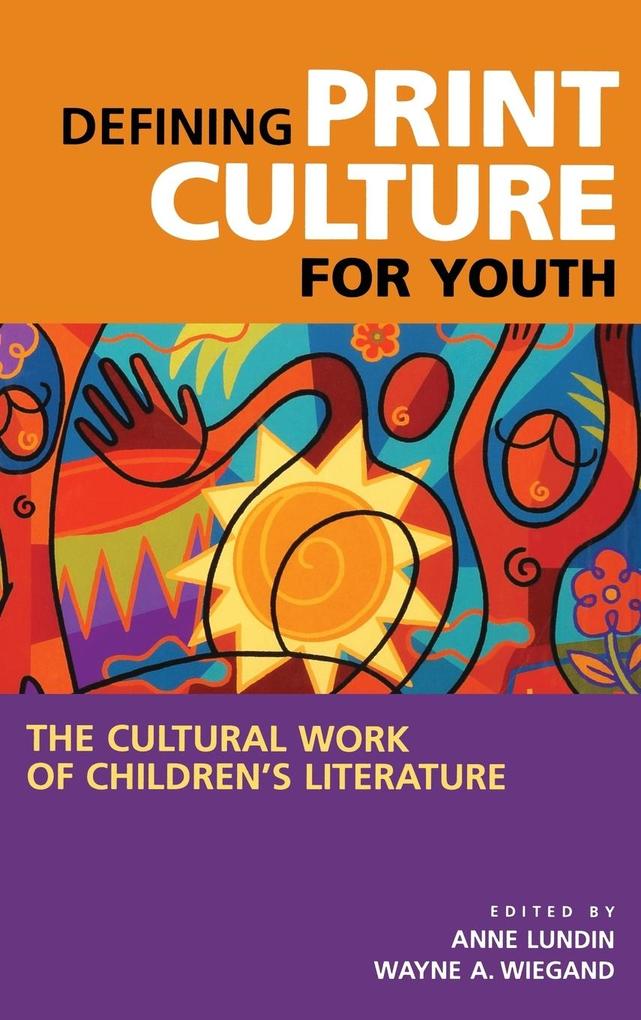
Zustellung: Mi, 29.10. - Sa, 01.11.
Versand in 7 Tagen
VersandkostenfreiSponsored by the Center for the History of Print Culture in Modern America, this volume features a selection of ten papers compiled from the Center's second national conference, accompanied by a detailed introduction. Presented by scholars from diverse backgrounds, the essays center on the emerging, interdisciplinary field of print culture. They examine children's literature and related print materials from a cultural perspective and discuss the influence of ideological, political, and material factors on the reader. Moreover, the authors join a cultural debate over the nature of childhood in specific historical periods.
Inhaltsverzeichnis
Introduction, by Anne Lundin
Chapter 1: Reading and Re-reading: The Scrapbooks of Girls Growing into Women, 1900-1930
Chapter 2: Communism for Kids: Race and Gender in Communist Children's Books in the United States
Chapter 3: Publishing Pride: The Jim Crow Series of Harlow Publishing Company
Chapter 4: The Power of Black and White: African Americans in Late Nineteenth-Century Children's Periodicals
Chapter 5: Harold O. Rugg and the Definition of Democracy
Chapter 6: Being Poor Doesn't Count: Class, Ethnicity, and Democracy in American Girls' School Series, 1900-1920
Chapter 7: Turning Child Readers into Consumers: Children's Magazine and Advertising, 1900-1920
Chapter 8: Learning to be a Woman: Lessons from Girl Scouting and Home Economics, 1920-1970
Chapter 9: Kate Chopin and the Birth of Young Adult Fiction
Chapter 10: Nancy Drew in Urban India: Reading as a Postcolonial Legacy
Chapter 1: Reading and Re-reading: The Scrapbooks of Girls Growing into Women, 1900-1930
Chapter 2: Communism for Kids: Race and Gender in Communist Children's Books in the United States
Chapter 3: Publishing Pride: The Jim Crow Series of Harlow Publishing Company
Chapter 4: The Power of Black and White: African Americans in Late Nineteenth-Century Children's Periodicals
Chapter 5: Harold O. Rugg and the Definition of Democracy
Chapter 6: Being Poor Doesn't Count: Class, Ethnicity, and Democracy in American Girls' School Series, 1900-1920
Chapter 7: Turning Child Readers into Consumers: Children's Magazine and Advertising, 1900-1920
Chapter 8: Learning to be a Woman: Lessons from Girl Scouting and Home Economics, 1920-1970
Chapter 9: Kate Chopin and the Birth of Young Adult Fiction
Chapter 10: Nancy Drew in Urban India: Reading as a Postcolonial Legacy
Produktdetails
Erscheinungsdatum
30. Mai 2003
Sprache
englisch
Seitenanzahl
230
Herausgegeben von
Anne Lundin, Wayne Wiegand
Verlag/Hersteller
Produktart
gebunden
Gewicht
490 g
Größe (L/B/H)
235/157/17 mm
ISBN
9780313321771
Entdecken Sie mehr
Bewertungen
0 Bewertungen
Es wurden noch keine Bewertungen abgegeben. Schreiben Sie die erste Bewertung zu "Defining Print Culture for Youth" und helfen Sie damit anderen bei der Kaufentscheidung.








